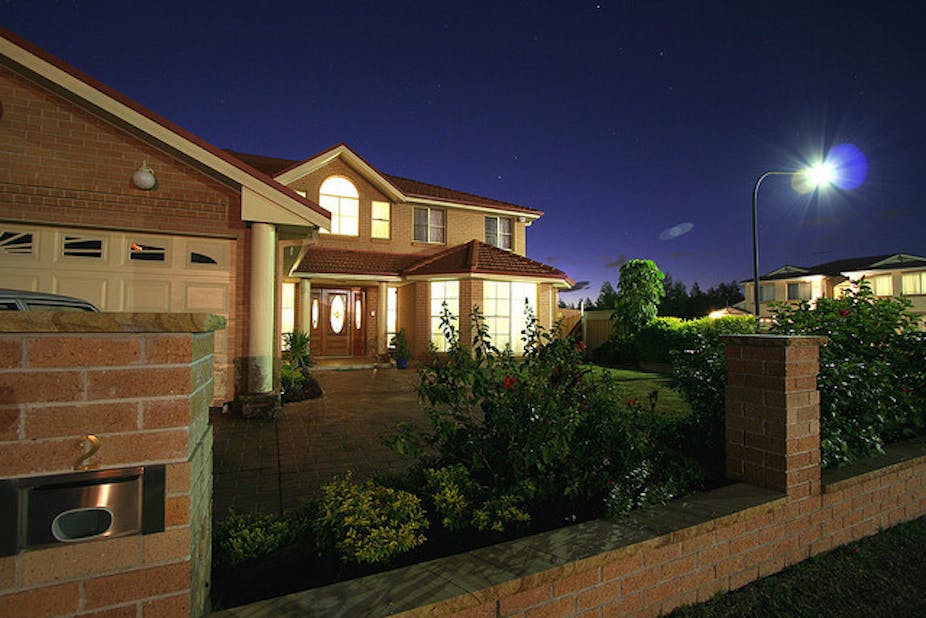Let me declare myself unambiguously: I do not hate McMansions, just because they’re easy to hate.
For quite a few years now, anybody who writes about these oversized single family homes has consistently demonised them as not just individually ugly, ill-designed and unsustainable, but as the building blocks of isolated suburbs devoid of a sense of community.
In an otherwise admirable reminder of just how ingrained the aspiration for a freestanding house is in the Australian psyche and polity, Peter McNeil, Professor of Design History at Sydney’s University of Technology, Sydney wrote in February on The Conversation:
Apart from warehouse conversions and architect-designed homes, many Australian dwellings are McMansions that do not relate to the scale of the houses around them or have anything to do with their environment. It is possible that as in North America, we are retreating into our homes more and more, meeting lovers online, watching our video on home entertainment systems, cooking on industrial quality ovens and holding parties with enormous BBQs that would once have provided a catering company. Perhaps we need to think a bit more about whether we are part of communities and networks or if we are heading towards an atomised existence?
That is mild compared to the vitriol of Fairfax writer Elizabeth Farrelly, Australia’s only successful populist newspaper architecture critic.
Farrelly masks her unalloyed condemnation of McMansion design with a long-term, consistent, but remarkably axiomatic stance against their over-consumption of land and resources.

If there is no need for even a pretence of objectivity, the condemnation can be brutal. On the Things Bogans Like website, entry #76 McMansions concludes:
In order to put a McMansion within reach of the financially impulsive bogan, builders take phenomenal amounts of shortcuts on the shoddily fitted out McMansion. Once the flashy silver oven breaks, and the paper thin feature wall cracks, it becomes clear that the housing estate is 10 years away from being a generic and unserviced bogan ghetto. It’s the great Australian dream come true.
What all this McMansion bashing has in common is a set of assumptions that are ill-founded.
The first is the convenient lie that McMansions are the opposite of architect-crafted paragons of good design. This is easiest dealt with by visiting somewhere like Homeworld Kellyville, the display village west of Sydney.
Talk to the sales people, and the names of some of our better known mid-career architects are volunteered as the designers of an unexpected number of models.
The second anomaly is that a surprising proportion of available project home models are of notably good design. They make the most of small sites, with great connections between informal living areas and well sheltered outdoor al fresco rooms.
They have a relatively low proportion of glass area compared to their floor area (typically 20% “glazing to floor ratios”) yet look light and airy. Most architect-designed houses often have double that proportion of glass, or more.
They often have good planning for the needs of parents and growing kids to spend time together, yet also get away from each other. They have admirably economical and practical construction, in materials no different to those employed for much more expensive houses.
True, some McMansions don’t have any of these worthy attributes, and all are too big.

The third inconvenient truth? Let’s ask Prof. Patrick Troy, a world expert on urban development and Visiting Professor at the University of New South Wales’ City Futures Research Centre.
He pointed out in 2006 that, of the major dwelling types, free standing suburban houses are the lowest energy consumers per occupant and appear to consume less water per occupant than contemporary apartments. That is data.
Professor Troy also suggests that, if climate change ever forces us back to a higher degree of local food production, what we call “urban sprawl” may be actually more resilient as a form of urbanisation than the concrete jungles of urban consolidation.
In the end, I too come down on the side of the argument that suggests we have McMansions because they are a symbol of success, not because we actually need them. And the bad McMansions do spoil it for me, in spite of my admiration for the good ones.
But to be clear: I don’t hate them just because I’m supposed to.

